Who would have imagined that antique dolls wouldn’t end up stashed in boxes in people’s attics, forgotten because the world is designed to always attract modern and new? Well, we hate to burst your bubble but not everyone wants modern and new. Antique porcelain dolls are such a steal today like they were before the early 1900s and this post delves deep into their history, value, identification, and care.
But first, what are they?
Table of Contents
The History Behind Porcelain Dolls
Porcelain Dolls
Known for their beauty, sturdiness and pliability, porcelain dolls or china dolls if you please, are made out of porcelain clay and have porcelain heads and extremities.
When porcelain dolls were first made, they all came glazed in absurd skin tones. This was before the late 1860s and most folks usually referred to them as China dolls. Porcelain dolls first appeared in Europe during the mid-1800s, yet it isn’t a surprise that most would think they came from China. Why? The porcelain material had its origin and gradual evolution in China.
This discovery by the Chinese was timely for European toymakers who were struggling to come up with realistic-looking human features on wood. Now these antique children’s toys with ingeniously painted faces, lifelike features and beautifully made clothing have become even more popular collectibles among today’s collectors.
The first porcelain dolls manufactured in Europe were china dolls. Before that, porcelain dolls were mainly manufactured in Germany from 1840 to around 1880 with glazed porcelain and painted hair. Parian dolls, white porcelain dolls also with painted hair but a matte unglazed texture, were first made in Germany as well.
It is worth noting that the art of porcelain making has been around since and continues to be perfected for what may be 2000 years now.
Porcelain and Bisque Dolls
French and German doll firms, but mostly French, made the first unglazed porcelain dolls in the late 1860s. Bisque dolls, which are confused by most for porcelain dolls, were at some point the top preferred material by doll head makers until some time after World War I.
When making bisque dolls or unglazed porcelain, molded clay and water paste go through very high temperatures, we’re talking temperatures above 1260 degrees celsius. By this time, the doll head has been formed and it goes through more heating and painting phases in order to design the features.
Bisque dolls were hardly made out of bisque material entirely as it makes the dolls quite heavy and delicate. Yes, that is why bisque doll making involves a combination of materials. Like we mentioned, the head is bisque but the body is from anything else, wood, leather, cloth, papier-mâché and glass for the eyes. They have layers on top of layers of paint too! How else did you think they make the facial expressions and skin tones pop?
Some of the popular French companies that made bisque dolls include; Gaultier, Jumeau, Rohmer, and Bru while German companies mostly made the doll heads with human hair or Angora goats’ mohair wigs. Who doesn’t want a doll that looks as close to real as a bisque doll? Certainly, the children of wealthy folks didn’t relate back then and as the world moved from fashion dolls to baby dolls towards the end of the 19th century, these porcelain dolls made such a statement.
Types and Identification of Antique Porcelain Dolls
Chinese Porcelain Dolls
These were especially popular in the mid 1800 to mid 1900s. Some of the earliest and rarest china dolls you may encounter today were made of porcelain heads and shoulders in the 19th century. Later, porcelain replaced wood on the rest of the body, if not hands and feet.
Dolls made in the U.S. or Japan after the mid 20th century may be reproductions since after 1940, the sales for Chinese porcelain dolls declined and doll makers like Emma Clear, attempted to reproduce the originals.
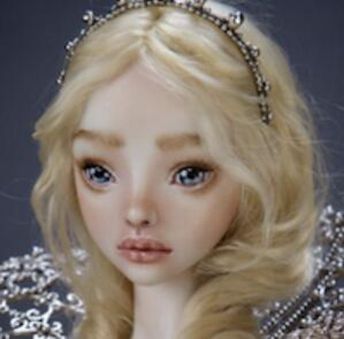
This already sold porcelain Enchanted Doll named Cinderella by Marina Bychkova went for $76, 500 on eBay.
Bisque Dolls
When they first appeared, bisque dolls came either in leather or cloth bodies before other materials of different composition like plastic became a thing in the early 20th century. The bisque material would ‘lack luster’ and get dropped by many at some point, only for it to be picked up yet again in the 70s and 80s for their kind. Even now, these dolls are more of collectibles for collectors than they are play toys.
Bisque dolls are of different types;
Adult fashion dolls: These china dolls from companies such as Jumeau echoed women, especially those from affluent backgrounds who used them for contemporary dress-up and play.
Baby (bébé) dolls: Childlike dolls made specifically for kids that came into the market starting the late 19th century. These antique china dolls first came dolly-faced before the makers figured they could use more realistic and expressive figurines or if you please, character-faced dolls.
Character dolls: Thes dolls took on a certain costume or personality mimicry.
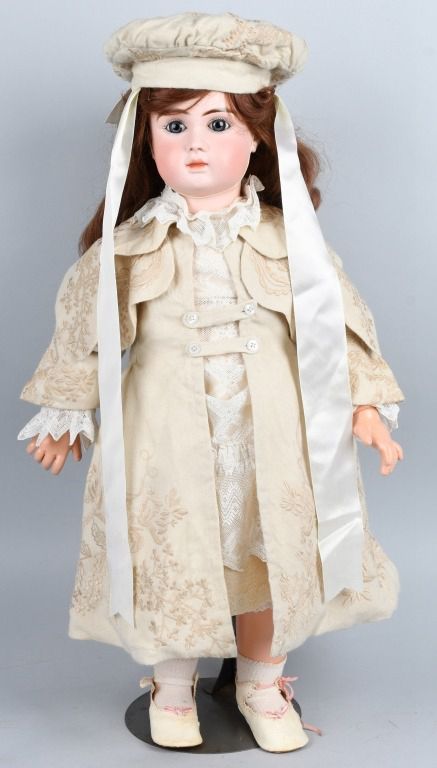
This French Steiner A19 Bisque Doll was sold for $2,000 by Milestone Auctions in 2018.
Identifying Antique Porcelain Dolls
China Dolls Characteristics
China dolls come in different sizes and distinctive features depending on the period they were made. Like mentioned earlier, some of the older models will come in peg-jointed wooden bodies or porcelain heads only while others have high foreheads and painted molded hair.
If you see a doll with black molded hair and painted blue/brown or stationary glass eyes, that’s likely a German china doll.
An 1850 to 170 china doll has an extravagant hairstyle resembling the Parisian style era during which doll manufacturers turned into their creative inner selves and added curls, ribbons, and flowers to hairstyles right before figuring out they could make wigs for dolls.
A porcelain doll from before the late 19th century had no bushy hair, bangs or any complacent facial features and definitely wasn’t a round fleshy faced doll with a wig on.
Watch: How to identify genuine antique chinese porcelain from modern reproductions
Bisque Dolls Characteristics
As you would have it, bisque dolls came in various shapes and sizes – in some cases, they made life size models too. Most of these dolls will also feature a dolly face, rather big eyes and a small open mouth. We are talking intricate but graceful finishing touches like jewels and flowers. Later models had the true Victorian era fashion – elaborate wigs, even teeth as well as opening and closing glass eyes.
One of the finest antique bisque dolls you may encounter today will likely have real hair pinned to a cork pate, pierced ears, and painted feet with trendy boots on.
The Value of Antique Porcelain Dolls
We probably should have started with this but you know we wouldn’t be writing this article if these antique playtoys weren’t worth anything, right? How much are we talking about, then?
If you did a quick google search on sites like 1stDibs and eBay, the price of most porcelain dolls lies between $10 to $20 while rarer antique dolls will fetch up to $2,000. How do you then determine a porcelain doll’s actual value?
The most expensive porcelain doll sold by Theriault in 2014 went for a whopping $300,000. If it’s an authentic, limited edition piece from the 1930s , that will no doubt fetch a higher amount!
Determining the Worth of your Antique Porcelain Doll
Seeing that two dolls from the same series and manufacturer can have varying price ranges, there are factors to keep in mind if you want to determine how much an antique porcelain doll is worth. These include condition, personal preference, and well of course, current fashion trends. Dolls borrow a lot from the fashion industry, so much so that there wouldn’t be a doll industry if the fashion industry never came alive.
Want a few hot tips on valuing your antique porcelain dolls? Here’s how to go about it when pricing any antique porcelain doll.
Manufacturer’s Mark
An antique porcelain doll marked “Germany” was likely produced after 1891 when all of the goods entering the U.S had to have a mark of their country of origin.
Begin by identifying that your doll is made from porcelain with a general assessment. Look for a name or number on the doll’s head, shoulder, or neck then use this number to compare other antique porcelain dolls online or consult an appraiser.
If there is a trademark in the images provided online, consider requesting a more precise photo and even better if the seller says they have an authentication certificate.
A collector may easily tell a doll’s year of manufacture by looking at the manufacturer’s stamp. A rare antique doll with an early 1900s stamp is definitely more valuable than modern reproductions!
Once you have determined the manufacturer of an antique porcelain doll and established it is from one of those renowned production companies like Royal Copenhagen or KPM Berlin, don’t stop at its company signature mark or stamp. While quality starts at these marks, there are a whole lot of other things to assess the quality and consequently, value of your antique porcelain doll.
So what more should you consider then?
The Doll’s Features
A good place to start with antique porcelain doll features is studying its characteristics and features. Most unmarked dolls were made by individual families from central Europe and have unique hairstyles. Different dolls from different fashion periods had different hairstyles.
Also, most 1800s and 1900s dolls had rooted hair and not so much as painted and the clothes were usually made of leather.
What’s the Material?
Besides its hairstyle, an antique china doll’s material is something you don’t want to ignore. Check whether the doll is made of porcelain or any other material. You can establish this by placing its head against your teeth and if it feels hard and cold, then it likely is made of porcelain.
We said most antique china dolls clothing was leather but today’s porcelain dolls may come dressed in victorian-era pieces too so if you aren’t sure, it’d be best to consult an appraiser for a formal quote.
Condition
If an antique porcelain doll meets all of the factors for a valuable and rare doll but is in poor condition, not much can be helped when it comes to the doll’s value. It’s like a ring on a nose’s pig, like the good book would say. That said, scan the doll with a magnifying glass for defects. Don’t quickly rule out a doll with a few rips though because, again, it may be authentic.
Defects in porcelain or a doll’s clothing show age and so a doll that has been repaired or has had its clothing replaced is still a china doll. Look through the item description for such details.
Painting Skill and Firing Technique
The mid-20th century saw a lot of China dolls reproductions so you would want to look out for less skillful painting methods and firing techniques on that china doll before you can put or accept the value that’s already on its head.
It takes a seasoned collector but also a keen one to see quality and ingenuity from all of porcelain dolls’ many angles.
Make Comparisons for Similar Dolls
While this is not the only thing to go by while valuing an antique porcelain doll, alike dolls from a similar maker and year are a good indicator of a doll’s value. Online databases and forums for doll collectors and antique doll references will ascertain the value when one is sure about the authenticity and value to place on their doll. It saves a great deal of time and money that one will need to use for an appraisal.
What Antique Porcelain Dolls Are Worth?
Now that we’ve already established that antique porcelain dolls are valuable, what are some porcelain dolls worth money?
Here are a few collectible antique porcelain dolls you might want to check out and maybe even invest in. Others have been sold and will offer a basis for a value to start with if you are clueless.
-
Late 19th Century Talking Porcelain Doll
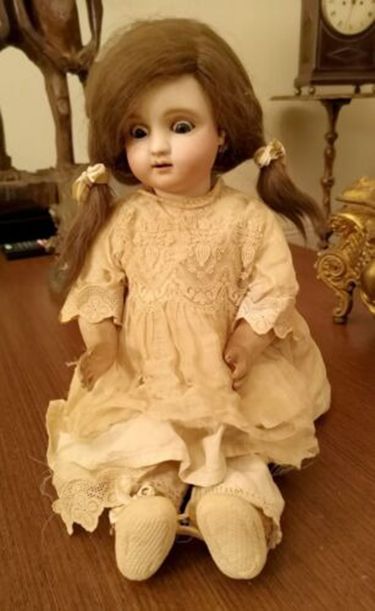
-
Antique Wooden Doll House With Porcelain Figures
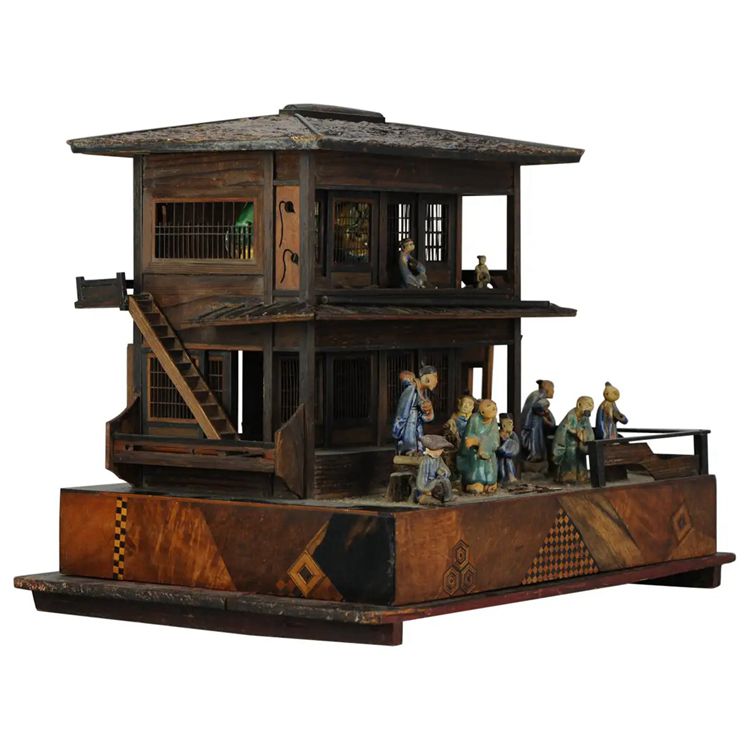
-
An Antique 1840 China Doll
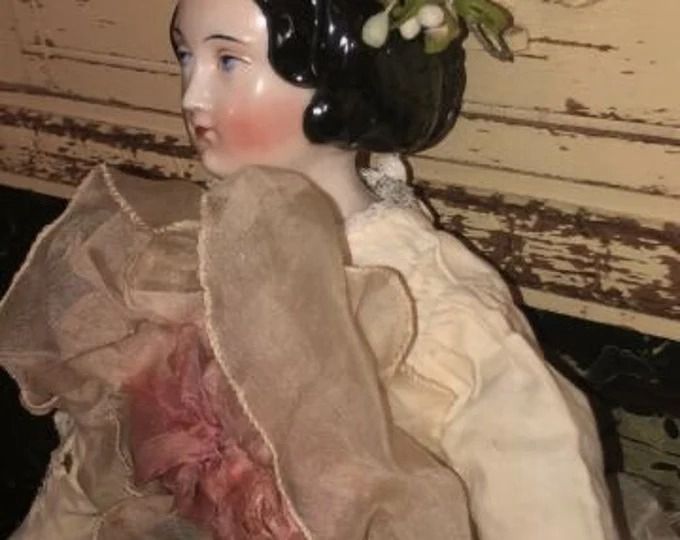
-
Rare German Porcelain Doll
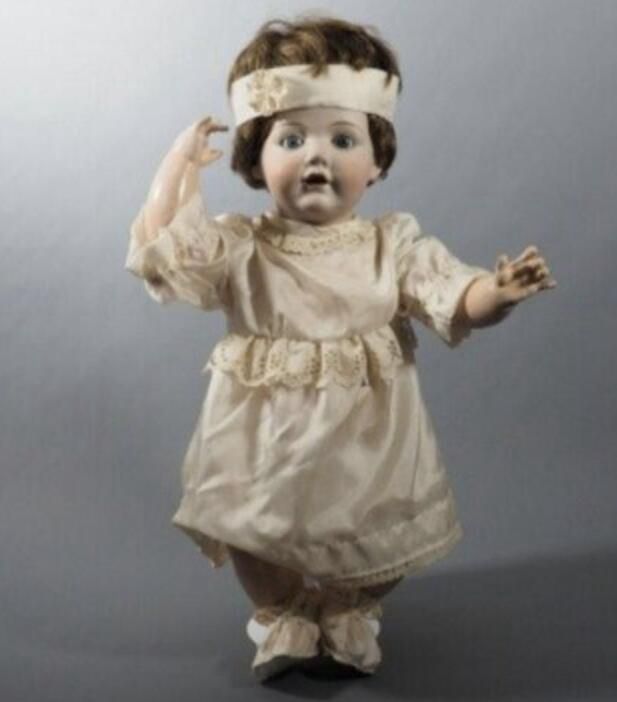
-
Frozen Antique China Doll
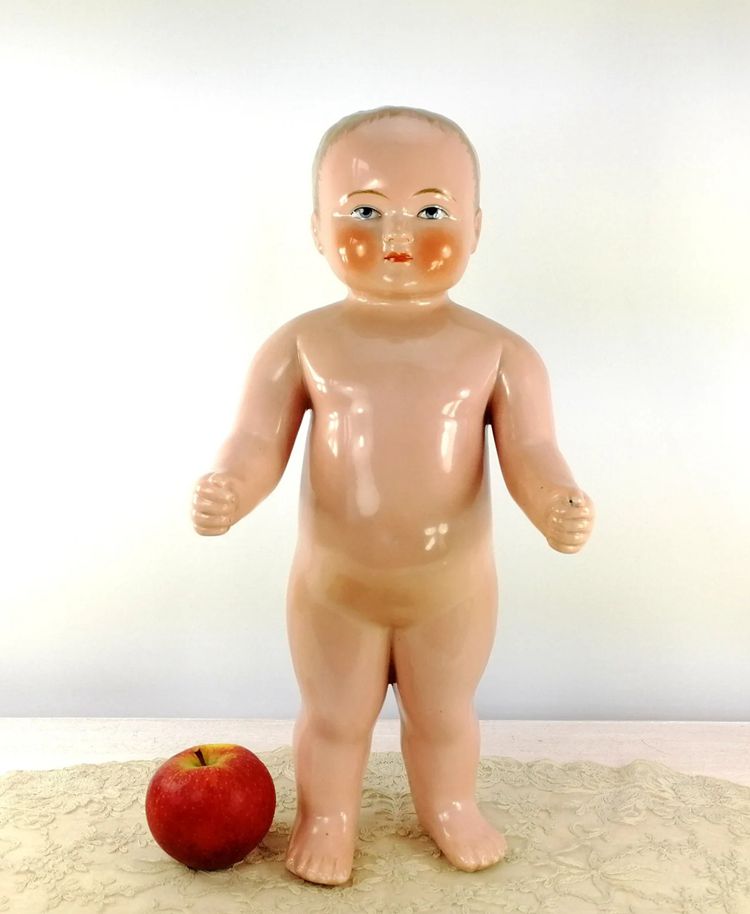
-
An Antique Chinese Porcelain Composition Doll
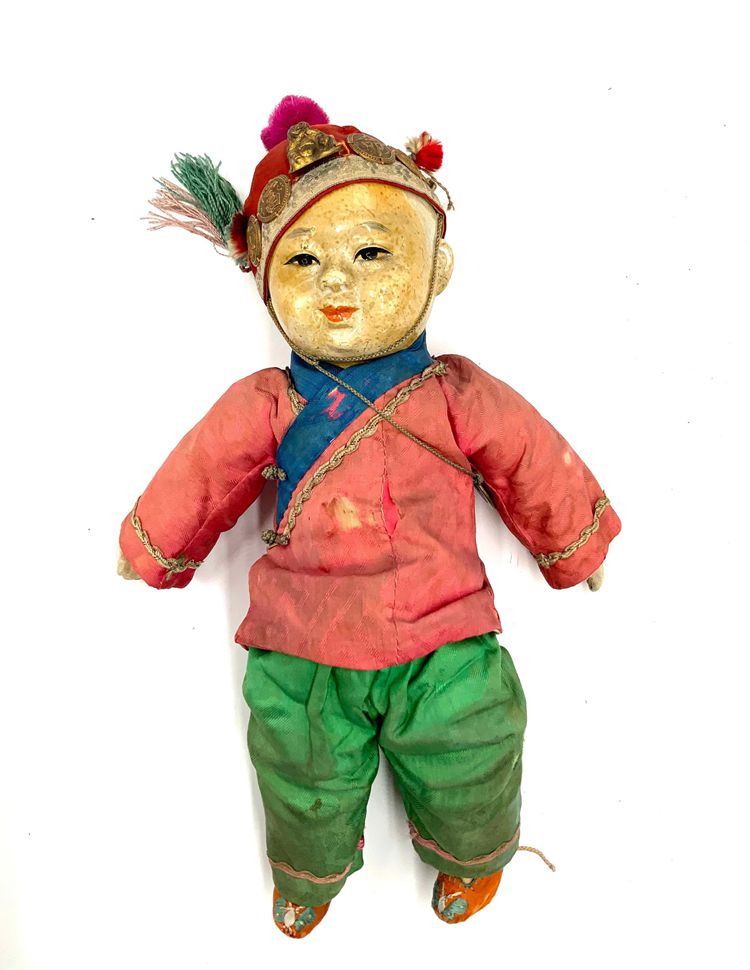
-
A German Antique Porcelain Doll
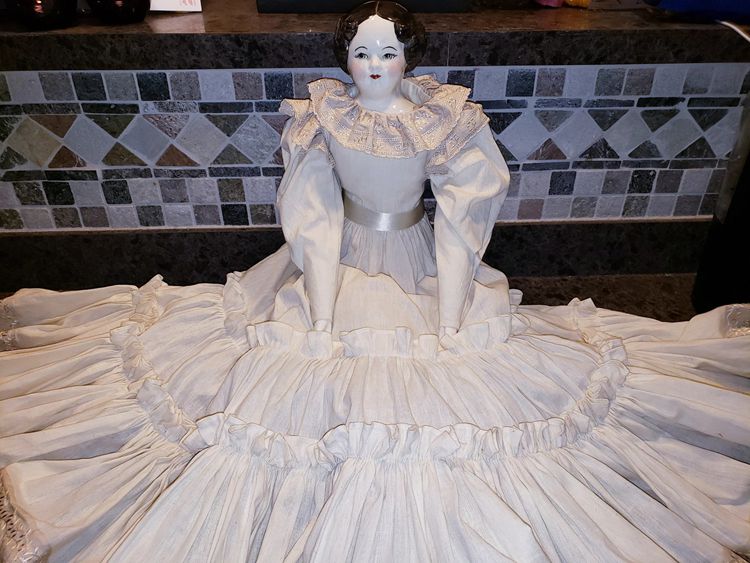
-
An Antique Victorian Era China Head Girl Doll
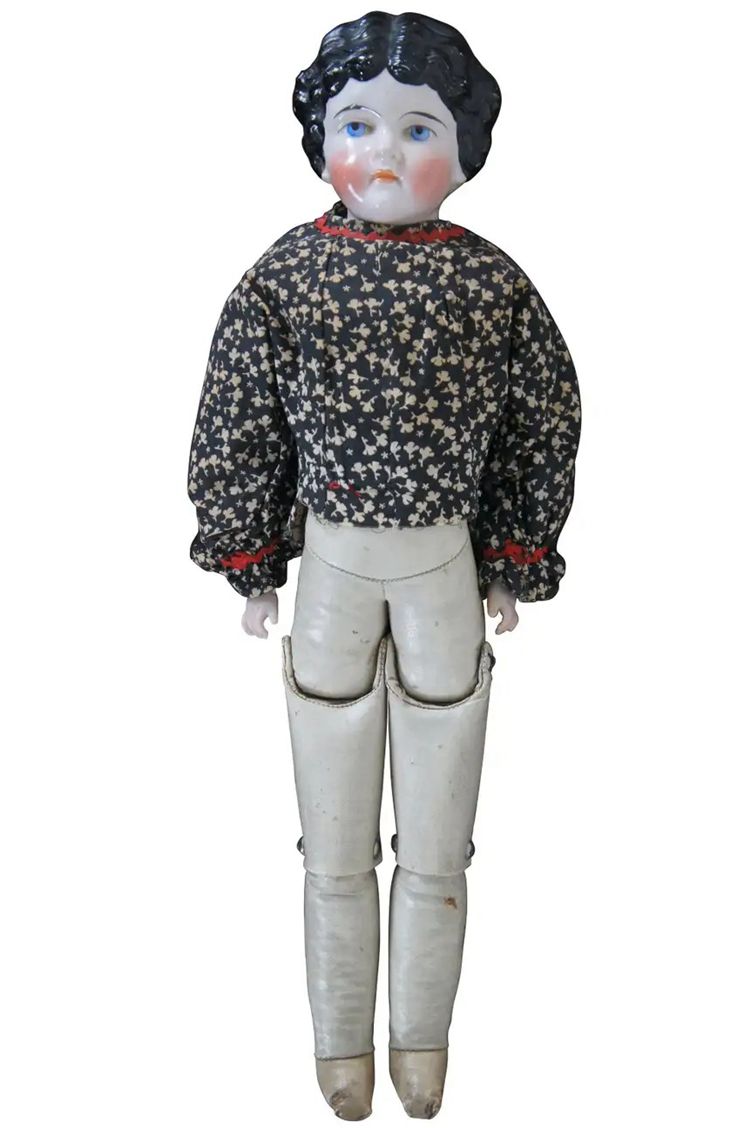
-
Deco Porcelain Half Dolls
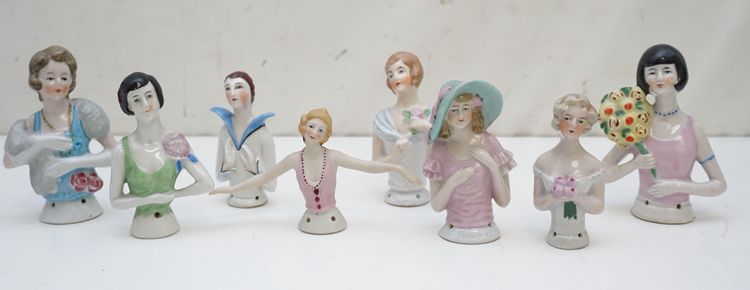
-
An Antique German Dollhouse Doll
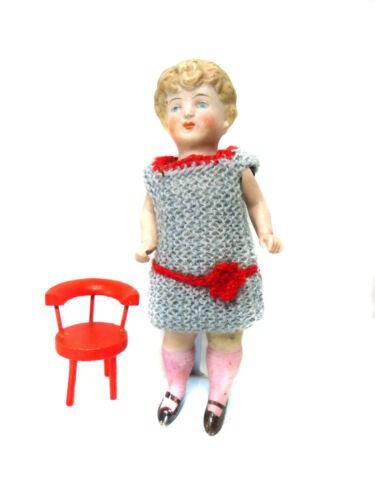
Where To Buy and Sell Porcelain Dolls
Seeing we are just from sharing some of the most worthy antique porcelain dolls we found online, you realize any collector can buy and sell antique porcelain dolls from the comfort of your home on different online websites and stores. These include 1stDibs, eBay, Etsy, Ruby Lane, Trocadero, and Nice Twice Doll Shops among others and offer live auctions as well.
Physical stores for antique dolls are another great option too! You might as well type that “Physical stores for antique porcelain dolls near me” into your google search engine or ask for recommendations from other collectors.
Whichever direction you choose to go with acquisition or sale, don’t forget to look out for similar dolls, and factors such as the doll’s material, condition, as well as all other nuggets shared in this post.
There are a dozen online videos too, where you can get further assistance in evaluating the price of an old porcelain doll. Consider looking into Dr. Lori Tips, AP Archive, & Dr. Lori.
Watch this video by Dr. Lori on tips about old dolls and values.
Conclusion
Now, we know that they are referred to as porcelain dolls because porcelain is one if not the only material used to make these highly collectible dolls. We also know how to go about identifying, valuation, buying or sale of any authentic older-looking porcelain dolls.
The only thing we aren’t sure about, is what is now stopping you from confidently identifying and valuing an antique porcelain doll. Might as well get to it and buy or trade one from your beautiful collection while at it, will you?





![Where To Sell Antique Furniture In 2022 [Ultimate Guide]](https://www.jacquelinestallone.com/wp-content/uploads/2022/09/Etsy-Your-Place-To-Buy-And-Sell-All-Things-Handmade-600x450.jpg)


